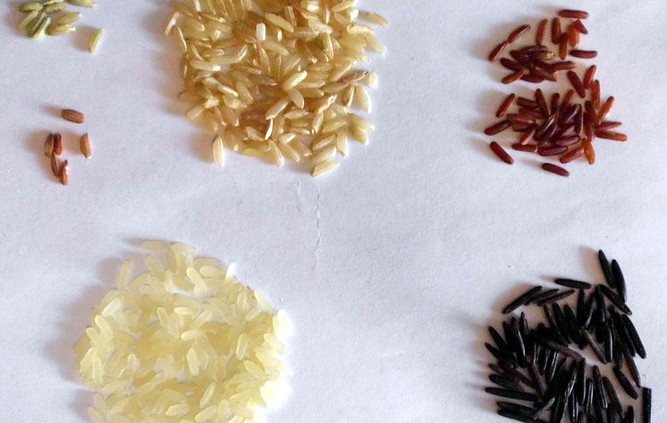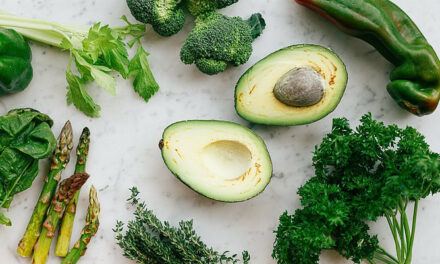Rice is a staple food in many countries. Jasmine Rice, in particular, is a type of rice loved by many people, especially those from Asian countries, because of its aroma and slightly sweet taste. However, many people with diabetes wonder if a high carb food like Jasmine Rice is good and healthy for them? If they can enjoy a serving of this delectable dish without worrying about their blood sugar level is skyrocketing or if they need to stay away from Jasmine Rice altogether.
Is Jasmine Rice Good for Diabetics? That is what we are going to find out in this article.
For people with diabetes, aside from exercise, their diet plays an important role in managing their good sugar level and staying healthy. This means they have to pay close attention to what they eat every time to prevent hyperglycemia.
One easy way to do that is by monitoring the number of carbs and the glycemic index of the food you take daily. This will help to prevent serious diabetes complications such as cardiovascular disease, kidney damage, neuropathy and foot ulcers.
Jasmine Rice is rich in carbohydrates and has a relatively high glycemic index score. If you have diabetes, the key to eating Jasmine Rice is portion control. Avoid eating Jasmine Rice in large portions and frequently to prevent a spike in your blood sugar leave.
It is also advisable to opt for the less processed varieties of Jasmine Rice, such as the brown, red, purple and black varieties, because they are more nutritious. They contain more fiber to keep you fuller for a long time, and they contain more minerals such as amino acids, vitamin B 6, iron, manganese, phosphorus and calcium than the processed white variety.
Although, based on the above, your decision to eat Jasmine Rice sounds simple, but it is actually not.
Let me explain in detail… First, let’s define Jasmin Rice before anything.
What is Jasmine Rice?
Jasmine Rice is named after the jasmine flower because of its floral fragrance. It is a type of long-grain aromatic rice native to Thailand.
It has a fragrance that reminds one of buttered popcorn and pandan. This fragrance results from the preference of the aromatic compound — 2-acetyl-1-pyrroline found in Jasmine Rice.
Each grain of Jasmine Rice is 4 times as long as its width. When cooked, this rice is soft and sticky with a slightly sweet flavour. They can be served with different spicy and tasty dishes such as curries, stir-fries, soups and stews.
Types of Jasmine Rice
Jasmine Rice comes in different colours, and each of them differs slightly in its nutritional content. We have 5 main types of Jasmin Rice.
1. White Jasmine Rice
They are processed Jasmine Rice and fall under the category of white rice. Their bran has been removed, and they have been stripped of their fiber and most nutrients.
They are slightly sticky.
2. Brown Jasmine Rice
This type of Jasmine Rice still has its bran, hence still retains its light tan colour.
It has an oat-like flavour and is more nutritious and higher in fiber than the white variety.
They contain antioxidants that promote the functioning of the nervous system. Brown Jasmine Rice also contains vitamins like vitamins A, B and beta-carotene. Most importantly, it contains gamma oryzanol which helps to reduce the level of blood cholesterol.
3. Black Jasmine Rice
Nicknamed the forbidden rice because it is usually reserved for the noble and people from the upper class. Compared to the white and brown variety, black Jasmine Rice has a considerably higher amount of fiber, iron and protein. It is also higher in anthocyanins.
4. Purple Jasmine Rice
5. Red Jasmine Rice
Jasmine Rice Nutritional Content
A ¼ cup serving of brown Jasmine Rice contains the below.
|
Nutrient |
Amount |
|
Calories |
160 |
|
Fat |
1g |
|
Cholesterol |
0g |
|
Sodium |
0g |
|
Carbohydrate |
35g |
|
Fiber |
2g |
|
Protein |
3g |
|
Vitamin B1 | |
|
Vitamin B6 | |
|
Phosphorus | |
|
Magessium | |
|
Selenium | |
|
Manganese | |
|
Iron |
2% of the required daily value |
|
Calcium |
2mg |
|
Folic acid |
20% of the daily value |
Your knowledge about the glycemic index is important in reasoning is Jasmine Rice is good or bad for diabetics. So, let me touch on the glycemic index now.
What is The Glycemic Index?
Most of you may have or may not have heard that there are some foods that have a high, medium or low glycemic index. What does the glycemic index of a food mean?
Glycemic index is a number that tells you how fast the carb in the food you consumed can be converted into glucose in your body. It is the measure of how the carbohydrate content of a food is likely to raise your blood glucose levels.
The glycemic index of carbohydrates containing foods ranges from 0 to 100, with water at the lowest level, which is zero since it contains zero carbs. Foods with the same quantity of carbs can have a different glycemic index.
Foods with a high glycemic index are foods that are quickly converted to glucose and absorbed faster into the bloodstream and are known as bad carbs. They make it difficult for you to balance your blood sugar level, especially if you are diabetic. Most the processed food falls into this category.
So, the lower the glycemic index, the lower the effect of the food on your blood sugar levels. So, food in terms of glycemic index categories as below.
- 55 or less GI = low glycemic index (good)
- 56 – 69 GI = medium glycemic index
- 70 and above GI = high glycemic index (bad)
Is Jasmine Rice Low or High in Glycemic Index?
Just like other varieties of rice, Jasmine Rice has a significantly high glycemic index. Jasmine Rice is high in carbs and has a glycemic index of 68 – 80.
The brown variety of Jasmine Rice has a lower GI level. That’s why brown Jasmine Rice is preferred as being healthier to the highly processed, white variety of the Jasmine Rice.
How Jasmine Rice Different From Other Rice Varieties?
There are different types of rice, and each has its own taste, texture, and properties that make it unique for a particular dish. Jasmine Rice is a long-grained rice that has a distinct texture, aroma and flavour that distinguishes it from other rice varieties.
Jasmine Rice is often used in a variety of Caribbean dishes and traditional Asian cuisine. Just like Basmati Rice, Jasmine Rice is an aromatic rice, but it is not as long as basmati rice when cooked. What makes this rice different from other rice types and popular is that when cooked, this rice becomes slightly sticky and gives off a delightful jasmine aroma and flavor, which makes it different from other types of rice.
This rice is also super soft with a moist texture that allows it to soak up flavors and spices. This makes Jasmine Rice great for stir-fry, as a side dish or in soups and curries.
While most other rice varieties come as white or brown rice, Jasmine Rice is available in white which is the polished variety and the less processed brown, black, red and purple variety.
Tip: Have you heard about Cauliflower Rice? Just follow the link to read more about the effect of Cauliflower on diabetes.
Possible Health Benefits of Jasmine Rice
The possible health benefits of Jasmine Rice include the below.
- Source of energy
Food rich in carbohydrates are a good source of energy. They power up your brain, muscles and other tissues.
Jasmine Rice, although lacking in protein, is rich in carbohydrates. As such, it is a good source of energy, especially for athletes who engage in high intensity or strength exercise. It can help to replenish glycogen back into the muscles and give them enough energy
for their next workout.
- Boost immunity
Jasmine Rice especially the colourful types are loaded with phytonutrients which helps to protect the body’s cell, boost immunity and improve your overall well-being.
- It is a good source of iron, magnesium, and phosphorus
Our body needs iron to help produce red blood cells, transporting oxygen and DNA synthesis.
- Improves digestive health
Brown Jasmine Rice is less processed and contains more fiber and nutrients than the white variety. The dietary fiber in brown Jasmine Rice helps to normalize bowel movement and support digestive health.
- Promotes healthy pregnancy
Jasmine Rice is loaded with folic acid, which helps to promote a healthy pregnancy. Folic acid helps to reduce the risk of birth defects and neural tube defects, especially when taken before pregnancy and within the first trimester.
What Does Research Say?
Since Jasmine Rice has a moderately high glycemic index, it means it quickly breaks down into glucose and enters the bloodstream faster. This results in high postprandial blood glucose and insulin levels that have been postulated to reduce insulin sensitivity, increase insulin resistance and reduce β-cell function.
Rice generally is known to have a substantial amount of carbs, a high glycemic index, and a high glycemic load.
Studies have shown that consuming lots of foods high in glycemic index can keep your blood sugar levels elevated and is associated with type 2 diabetes risk. Foods with a high glycemic index are associated with obesity, Increased hunger and decreased satiety.
When your blood sugar level goes up, there will be a surge in your insulin level, which will promote the storage of energy and consequently a dramatic drop in blood sugar levels after a short while. And because your body wants to maintain a steady blood glucose level, it will trigger hunger, making you eat more.
Do you know what happens to the extra calories you consume? Hmm, they are stored in your fat cells resulting in weight gain!
Foods that are high in the glycemic index have also been linked to increased risk of cardiovascular disease and kidney failure.
This does not mean that you cannot enjoy your plate of Jasmine Rice but go for the brown or the less processed varieties instead of the white variety because they are whole grain, have a lower glycemic index and contain more fiber.
And, fibre
helps the digestive system to function properly, lowers cholesterol and slows down the digestion of carbohydrates, thereby slowing down the rate at which glucose is released into the bloodstream. It also helps in managing cholesterol levels and reduces the risk of type 2 diabetes. Fiber also helps in weight loss as it helps to keep you full for longer.
Is Jasmine Rice Good For Diabetics?
Diets low in glycemic index are usually recommended for diabetic patients. As stated earlier, foods with glycemic index of lower than 70 are more slowly absorbed into the bloodstream and are preferable for people with diabetes as the blood gets the sugar in lower doses. This helps to prevent spikes in blood sugar levels after meals.
Jasmine Rice is high in carbs and has a relatively high glycemic index. This means it is easily digested and released into the bloodstream, which is not good for people with diabetes. This increases blood sugar level, causing the pancreas to release more insulin into the bloodstream with lower glucagon. This makes the body store more glucose as fat and inhibits the burning of fat. And since the food is easily digested, you will quickly get hungry.
But one can reduce the glycemic index of Jasmine Rice by combining them with other foods like vegetables and protein such as meat, lentils or fish. This can help reduce the glycemic index and slow down the digestion and blood sugar spikes caused by Jasmine Rice. Another way to prevent sugar spikes is by using portion control, not only when eating Jasmine Rice but also when eating other foods high in carbs.
When Should You Avoid Jasmine Rice?
As much as brown Jasmine Rice contains a significant amount of fiber, phytic acid and polyphenols, which are of benefit to people who have type 2 diabetes, it also has its bad side as noted earlier. Just like most things have their advantages as disadvantages, no exception here too.
It is advisable to cut down or refrain completely from consuming Jasmine Rice if you are:
Since people who have prediabetes or those with diabetes need to follow a low glycemic index (GI) diet, they should avoid Jasmine Rice, especially the white variety since it is a starchy food with a high glycemic index with a lot of calories. Jasmine Rice can result in blood sugar spikes and elevates cholesterol levels, thereby worsening the symptoms of diabetes.
- Obese or if you are struggling to lose weight
- Allergic to Jasmine Rice
If you notice that you have rashes, hives and nausea after consuming Jasmine Rice, you may need to stay away from Jasmine Rice.
Best Healthier Alternatives To Jasmine Rice
Brown Jasmine Rice and the other colored varieties are healthier substitutes to white Jasmine Rice. But, it is advisable to opt for healthier whole grains because of their high glycemic index, especially if you have diabetes.
Other healthier and nutritious grains you can use to substitute Jasmine Rice that have lower glycemic index score are;
- millet,
- bulgur,
- quinoa,
- barley,
- amaranth,
- rolled and steel-cut oats,
- buckwheat.
You can also use vegetables like Cauliflower for cauliflower rice.
It is crucial to seek your doctor’s opinion if you have diabetes before adding any foods to your diet. Your doctor can give you more accurate information on what to avoid, what to eat, and the right quantity to eat as it relates to your condition in particular.
Conclusion
People with diabetes don’t have to avoid carbs completely. Carbohydrates give you the energy you need to function and carry out your daily activities properly.
However, you will need to be more careful in choosing the types and quantity of carbs to eat because some carbohydrates can quickly cause your blood sugar levels to spike. These are carbs with a high glycemic index.
Foods with a low glycemic index are good for the body because they are more slowly digested, and this helps to minimize spikes after meals.
Jasmine Rice is high in glycemic index. This does not mean you cannot enjoy it, but eat it in moderation, go for the less processed variety because they have a lower GI, with more fiber and more nutrients.
Add sources of protein such as egg, fish, meat, chicken and lentils to lower the GI and to keep you full for longer. You can also bulk up with vegetables for more fiber because they are more filling. They can help to slow down digestion and minimize blood sugar spikes. And, instead of eating Jasmine Rice more often, try to strike a balance by alternating with other grains that are lower in glycemic index.












